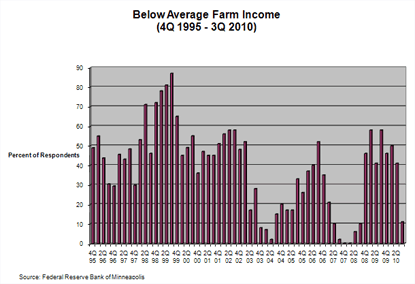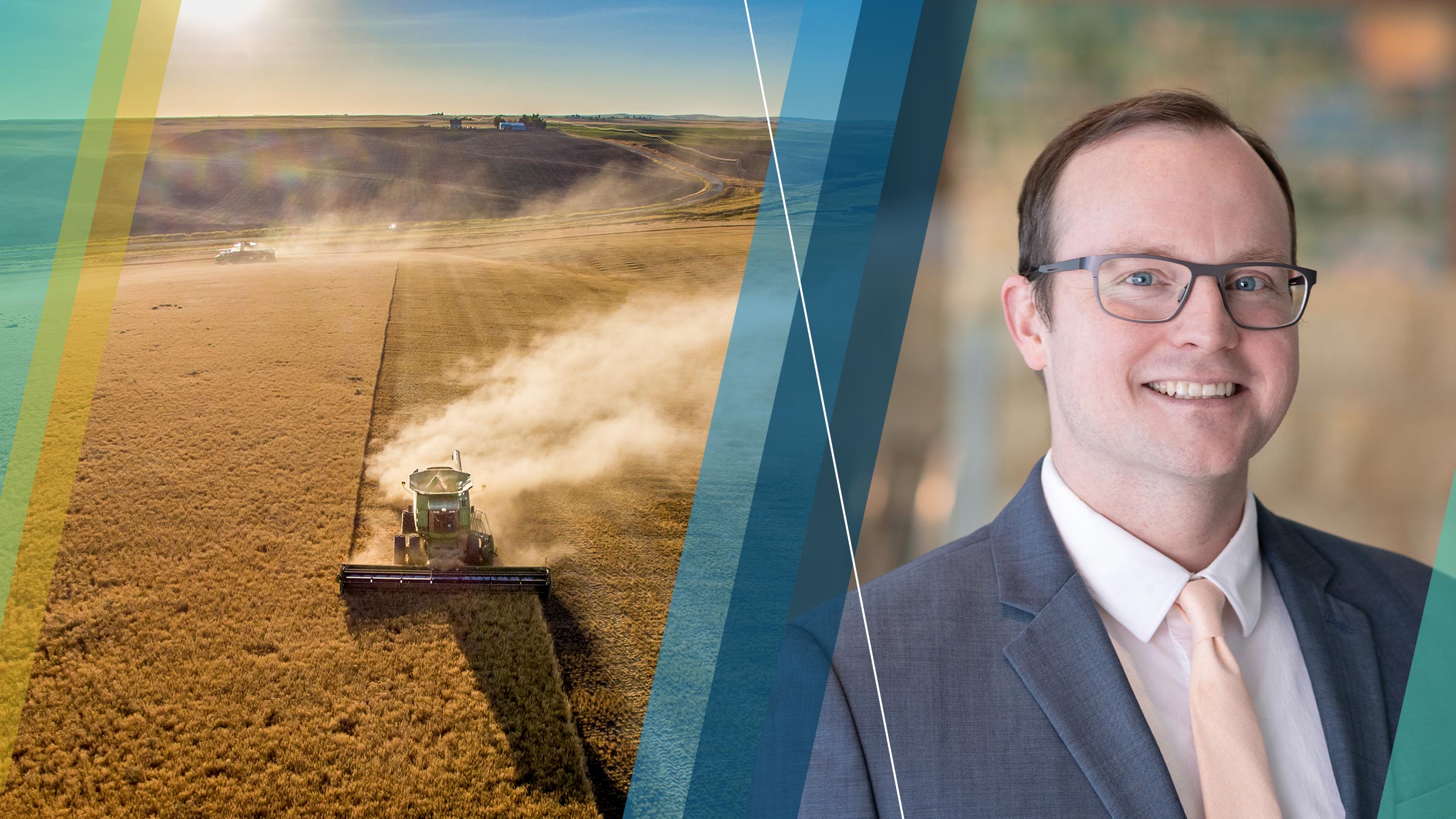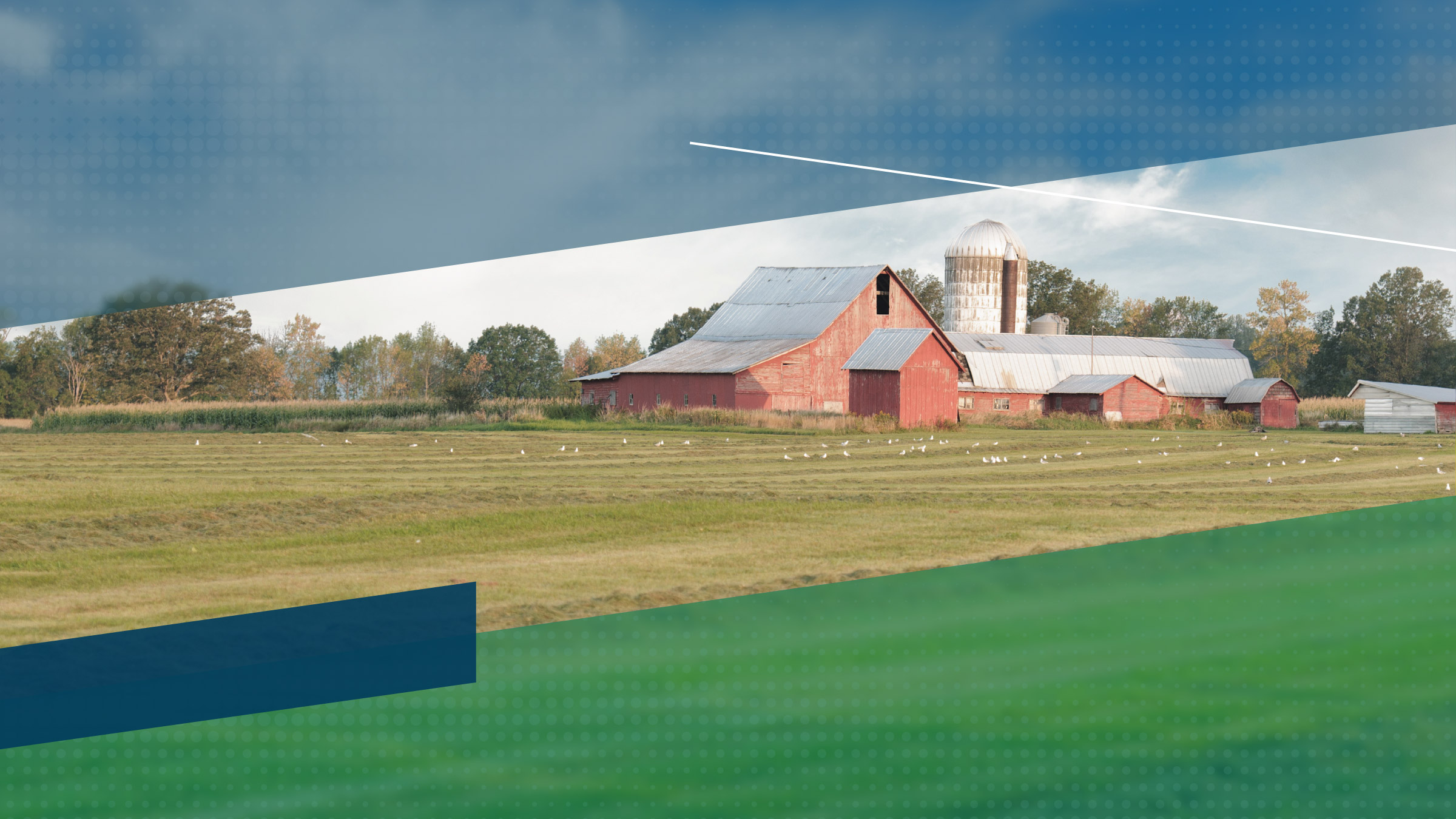Despite pessimistic third quarter predictions by many lenders during the second quarter, the Minneapolis Fed’s third-quarter (October) agricultural credit conditions survey shows that farm income increased and that most lenders are optimistic about the fourth quarter. According to one Minneapolis lender, “As long as we continue to get above-average crops and high prices, land prices and rents will continue to increase.” Similar to farm income, demand for loans, loan repayments and land values also held steady in the third quarter, while interest rates fell slightly.
Farm income, household spending and capital investment
The declining farm income reported in the past several quarters seems to have turned around, and many lenders expect to see more increases next quarter. The lenders responding to the survey reported that farm income was higher in the third quarter than in the same period a year ago. In fact, 36 percent of the lenders (43 banks) reported higher income, whereas only 11 percent (13 banks) reported lower income. Montana had the highest or most consistent increase with 50 percent of respondents reporting higher income in the third quarter. In keeping with the positive income growth in the third quarter, 63 percent of the lenders responding to the survey predict that income will also be higher next quarter. According to one Minnesota lender, “Initial yields [were] considerably higher than expected, and with current prices income, will be higher than planned.” The majority of lenders who responded to the survey also reported very small increases in household and capital spending, and higher-than-expected income has caused many to expect increases in capital spending for the next quarter. In fact, lenders in all states predict higher capital and household spending next quarter compared with a year ago.
Loan repayments and renewals
Agricultural producers are holding steady on repayments and loan extensions. Three-quarters of the lenders responding to the survey (93 banks) reported no change in loan repayments, while only 5 percent (6 banks) reported increased levels. Similarly, 84 percent of the lenders reported no change in the number of loan renewals or extensions.
Demand for loans, required collateral and interest rates
The demand for loans in the district was similar to the demand a year ago, with 50 percent or more of the responding lenders reporting no change. This result was consistent across all district states except South Dakota, where respondents saw a decrease in the demand for loans from the same period a year ago, and North Dakota, where lenders reported a very small increase in demand. For the fourth quarter in a row, no banks reported refusing a loan because of fund shortages. Both fixed and variable operating, machinery and real estate interest rates fell just slightly from their second-quarter levels.
Cash rents and land values
The district’s average cash rents and land values for nonirrigated, irrigated and ranchland all increased from the previous year. Nonirrigated farmland saw the largest increases, with the average cash rent increasing 6.6 percent over last year and the average land value increasing 9 percent. Increases for irrigated farmland were close behind (5.3 percent increase in cash rents and a 6.8 percent increase in land value), while gains for ranchland were more modest (1.4 percent and 3 percent, respectively). In addition, all states except Minnesota and Montana reported increases in both measures. Average cash rents for irrigated farmland fell by 2.5 percent in Minnesota, and nonirrigated farmland in Montana fell by 9 percent.
When lenders were asked what return investors expected on land purchases, the responses ranged from 3 percent to 12 percent. The expectations were highest in Wisconsin, where the average response was 8.4 percent. The average response in North Dakota was 6.3 percent, while in Minnesota, Montana and South Dakota, the average response was between 4.4 percent and 4.9 percent.
Outlook
Expectations for the fourth quarter of 2010 are good. As one lender in Minnesota reported, “The crop outlook in southern Minnesota and northern Iowa is excellent.” Despite wet weather in South Dakota, multiple lenders reported that calf and grain prices are favorable and that land values are holding steady. Over 63 percent of lenders responding to the survey predict that farm income will increase in the fourth quarter, and over 50 percent expect to see increases in capital spending. Household spending, loan demand, loan renewals and the amount of required collateral are expected to remain unchanged in the fourth quarter.
Appendices:






